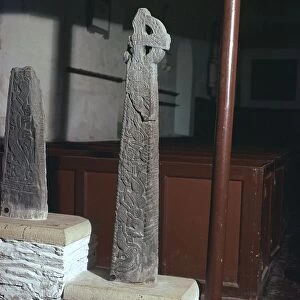Narcissus Cantabricus Monophyllus
![]()

Poster Prints from Mary Evans Picture Library
Narcissus Cantabricus Monophyllus
Narcissus Cantabricus Monophyllus (Durieu) of the Amaryllidaceae family. It has one leaf per bulb, and a creamy white flower
Mary Evans Picture Library makes available wonderful images created for people to enjoy over the centuries
Media ID 4422937
© Mary Evans Picture Library 2015 - https://copyrighthub.org/s0/hub1/creation/maryevans/MaryEvansPictureID/10436005
Amaryllidaceae Bulb Creamy Daffodil Daffodils Delicate Flora Horticulture Malby Narcissus Petal Petals Pla Nts Reginald Stamen
EDITORS COMMENTS
Narcissus Cantabricus Monophyllus, also known as the Single-Leaved Narcissus or Malby's Narcissus, is a rare and captivating bulbous plant belonging to the Amaryllidaceae family. This exquisite specimen, with its delicate creamy white flower, is a testament to the rich biodiversity of the natural world. The Narcissus Cantabricus Monophyllus is native to the Cantabrian Mountains in northern Spain and is characterized by its unique feature of having only one leaf per bulb. The large, broad, and glossy green leaf emerges from the ground as the plant begins to grow, providing energy to the developing flower. The creamy white flower of the Narcissus Cantabricus Monophyllus is a delight to behold, with six delicate petals that unfurl to reveal the intricacies of its design. The petals are adorned with subtle veining and a slight yellow hue at their base, adding depth and dimension to the flower. The history of the Narcissus Cantabricus Monophyllus is as intriguing as its appearance. It was first described by the French botanist J.M.C. Lamarck in 1794, but it was not until 1843 that the plant was given its current name by the French botanist Alphonse Pyramus de Candolle in honor of the English botanist John Malby. The intricacies of the Narcissus Cantabricus Monophyllus do not end with its flower. The plant also boasts a complex reproductive structure, with six stamens arranged in two whorls around the central style. The stamen filaments are long and curved, adding to the plant's allure. The Narcissus Cantabricus Monophyllus is a true marvel of nature, a reminder of the beauty and diversity that can be found in the smallest of packages. This plant is a must-see for any horticulturalist, botanist, or nature enthusiast, and serves as a testament to the importance of preserving and protecting rare and endangered plant species.
MADE IN THE USA
Safe Shipping with 30 Day Money Back Guarantee
FREE PERSONALISATION*
We are proud to offer a range of customisation features including Personalised Captions, Color Filters and Picture Zoom Tools
SECURE PAYMENTS
We happily accept a wide range of payment options so you can pay for the things you need in the way that is most convenient for you
* Options may vary by product and licensing agreement. Zoomed Pictures can be adjusted in the Cart.













